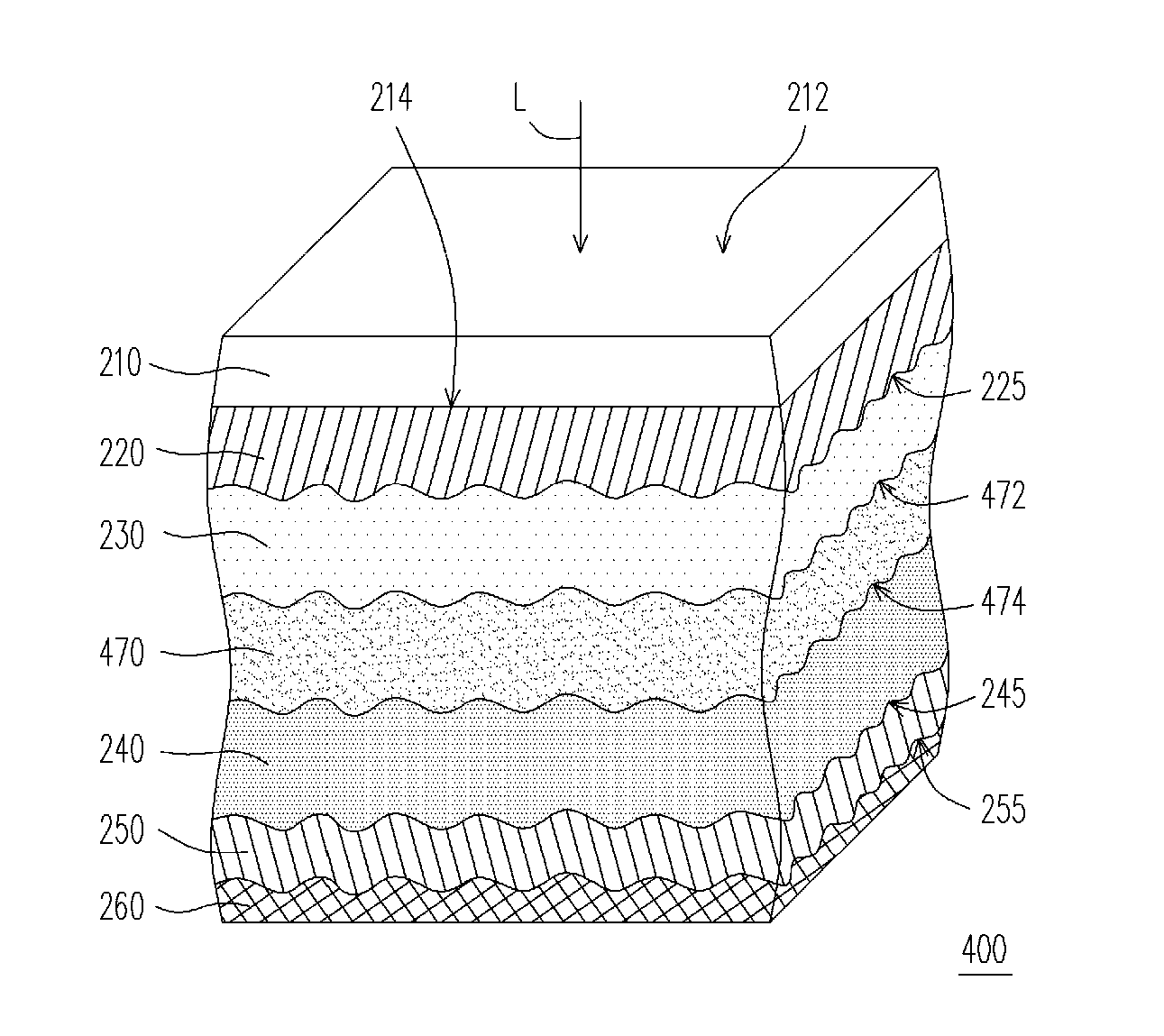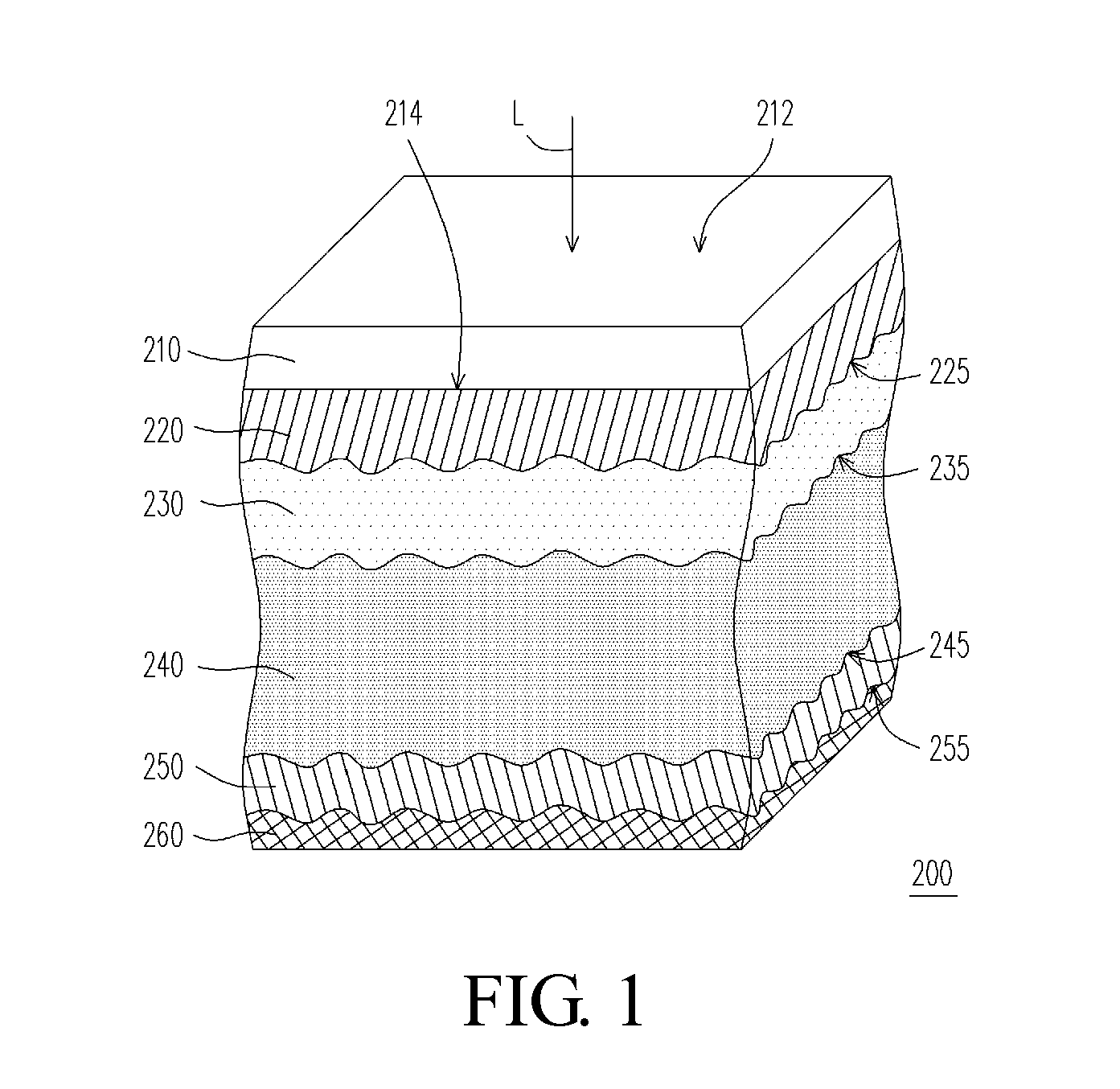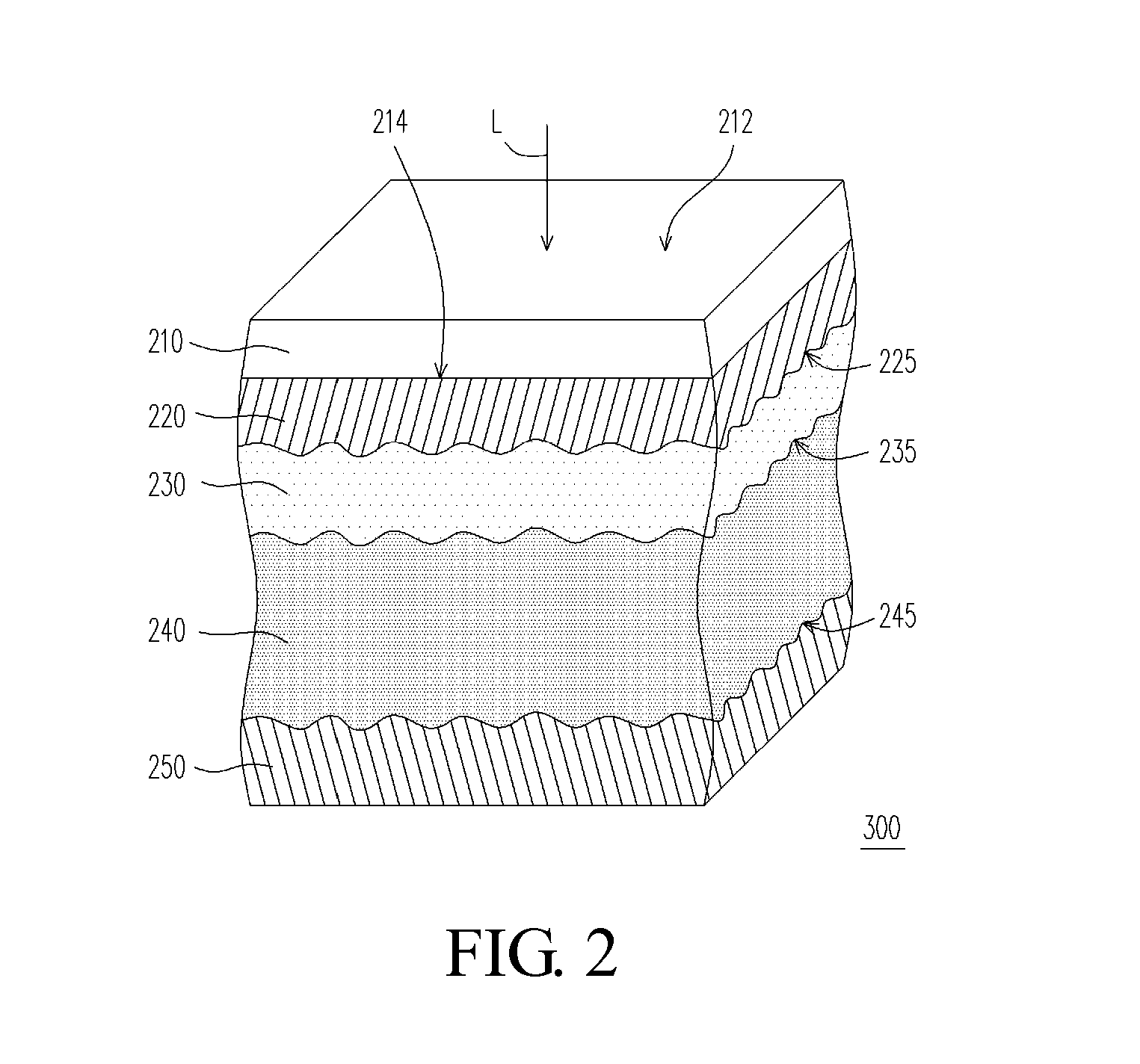Thin-film solar cell and manufacturing method thereof
a solar cell and thin film technology, applied in the field of solar cells, can solve the problems of insufficient utilization of light rays entering the solar cell, inability to fully absorb and convert sunlight energy, and inability to fully absorb and utilize light rays, so as to improve the photoelectric conversion efficiency and increase the utilization factor of light rays
- Summary
- Abstract
- Description
- Claims
- Application Information
AI Technical Summary
Benefits of technology
Problems solved by technology
Method used
Image
Examples
Embodiment Construction
[0033]FIG. 1 is a schematic view of a thin-film solar cell according to an embodiment of the present invention. Referring to FIG. 1, the thin-film solar cell 200 comprises a light transmissive substrate 210, a transparent electrode 220, a first photovoltaic layer 230, a second photovoltaic layer 240 and a back electrode 250.
[0034]The light transmissive substrate 210 has a light incident surface 212 and a back surface 214 opposite to the light incident surface 212. The light transmissive substrate 210 is illustrated as a glass substrate in this embodiment; however, the present invention is not limited thereto. In other embodiments, the light transmissive substrate 210 may also be some other substrate with favorable light transmissivity, for example, a plastic substrate or a flexible substrate.
[0035]The transparent electrode 220 is disposed on the back surface 214, as shown in FIG. 1. In this embodiment, the transparent electrode 220 may be made of a transparent conductive material su...
PUM
 Login to View More
Login to View More Abstract
Description
Claims
Application Information
 Login to View More
Login to View More - R&D
- Intellectual Property
- Life Sciences
- Materials
- Tech Scout
- Unparalleled Data Quality
- Higher Quality Content
- 60% Fewer Hallucinations
Browse by: Latest US Patents, China's latest patents, Technical Efficacy Thesaurus, Application Domain, Technology Topic, Popular Technical Reports.
© 2025 PatSnap. All rights reserved.Legal|Privacy policy|Modern Slavery Act Transparency Statement|Sitemap|About US| Contact US: help@patsnap.com



